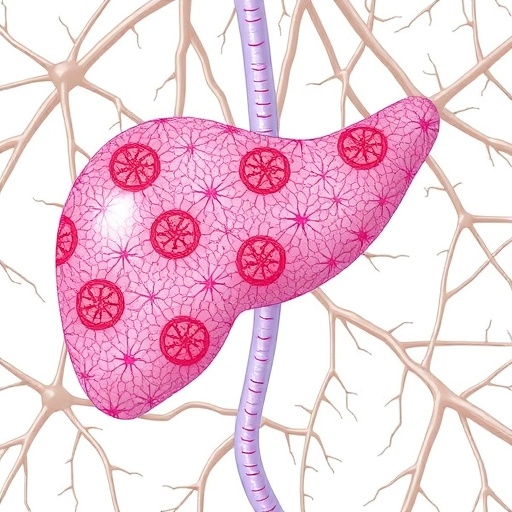In the delicate and intricate world of neonatal intensive care, the management of extremely preterm infants—those born at the very edge of viability—remains one of the most challenging frontiers in modern medicine. A recent comprehensive investigation sheds new light on the therapeutic use of hydrocortisone, a synthetic analog of the steroid hormone cortisol, in this vulnerable population. Cortisol itself plays a fundamental role in regulating stress responses, modulating inflammation, and maintaining glucose homeostasis, making its synthetic counterpart a molecule of high clinical interest for infants struggling to adapt outside the womb.
Extremely premature infants, particularly those born well before 28 weeks of gestational age, are at significant risk for a variety of life-threatening complications. Among these is the relative adrenal insufficiency commonly observed—a condition where the infant’s own cortisol production may be inadequate during critical moments of physiological stress. This insufficiency can leave newborns susceptible to cardiovascular instability and respiratory conditions driven by inflammatory processes. It is in this context that hydrocortisone administration has been proposed and increasingly utilized as a potential intervention.
Emerging clinical evidence now suggests that early prophylactic administration of hydrocortisone—usually initiated within the first 48 hours of life—may expedite the weaning process from invasive ventilation. This is a pivotal milestone for these infants, as prolonged mechanical ventilation itself is linked to numerous adverse outcomes, including bronchopulmonary dysplasia (BPD), a chronic lung disease that poses long-term health risks. Remarkably, some studies indicate that this prophylactic strategy might also correlate with reductions in in-hospital mortality and the combined endpoint of death or BPD, providing hope for an intervention that can modulate both survival and morbidity in tandem.
However, the therapeutic benefits of early hydrocortisone use come with nuanced caveats. Particularly in infants born before 26 weeks’ gestation, the incidence of sepsis — a severe systemic infection — appears to rise with prophylactic hydrocortisone exposure. This highlights the delicate immunological balance clinicians must negotiate when administering steroids in such fragile patients. Moreover, the concurrent use of indomethacin, a nonsteroidal anti-inflammatory drug frequently employed to close patent ductus arteriosus (a common cardiovascular condition in preterm infants), raises another safety concern: an increased risk of gastrointestinal perforation. This serious complication necessitates extreme caution and warrants further research to refine safety protocols and co-medication strategies.
Beyond the acute neonatal period, the long-term neurodevelopmental implications of early hydrocortisone prophylaxis remain frustratingly unclear. Although this medication can alter respiratory and cardiovascular trajectories in the immediate term, systematic, adequately powered studies assessing the impact on cognitive, motor, and behavioral outcomes in surviving infants are conspicuously absent. This knowledge gap underscores the pressing need for longitudinal clinical trials to understand whether hydrocortisone’s benefits extend or give way to potential neurodevelopmental risks as the child matures.
Conversely, the initiation of hydrocortisone therapy beginning after the first postnatal week presents a different clinical picture. In infants requiring ongoing mechanical ventilation during this later window, hydrocortisone administration has been demonstrated to assist in successful extubation, potentially reducing ventilator-associated complications in the short term. However, unlike early prophylaxis, this later use has not shown measurable impacts on mortality rates, incidence of BPD, or neurodevelopmental outcomes. This divergence in efficacy based on timing underscores the dynamic physiological environment of the preterm infant and suggests that therapeutic windows may be narrow and highly sensitive to developmental stage.
Another critical clinical indication for hydrocortisone in this population is the treatment of hypotension, a condition marked by dangerously low blood pressure that can impair organ perfusion and contribute to morbidity. Although hydrocortisone can reliably raise blood pressure in hypotensive extremely preterm infants, the broader question of its safety profile—both short and long term—remains unsettled. Furthermore, comparisons to other pharmacological agents used to combat hypotension, including vasopressors and inotropes, have not yet established a clear hierarchy of efficacy or safety, leaving treatment choices to be guided largely by institutional protocols and expert opinion.
The mechanistic rationale for hydrocortisone’s clinical effects is deeply rooted in its hormonal properties. As an endogenous glucocorticoid, cortisol exerts widespread influence on gene expression patterns, immune cell modulation, and glucose metabolism. These pathways collectively orchestrate the physiological stress response essential for maintaining homeostasis in the face of illness or injury. In extremely preterm infants—whose adrenal glands and hypothalamic-pituitary-adrenal (HPA) axis function are immature—supplementing with hydrocortisone may help mimic natural cortisol surges seen in more mature neonates, thus stabilizing vital organ function during critical early life stages.
Nevertheless, hydrocortisone’s immunomodulatory effects cut both ways. While aiding in controlling inflammation may improve pulmonary outcomes by limiting damaging inflammatory cascades that exacerbate BPD, suppression of immune defenses can increase vulnerability to infectious agents in an immature immune system. This immunological tightrope walk underpins many of the emerging concerns surrounding its prophylactic use, particularly for those born at the lowest gestational ages.
Clinicians and researchers are increasingly focusing on refining dosing regimens, timing, and patient selection to optimize outcomes. Individualized approaches that consider gestational age, severity of illness, and concomitant therapies might reduce adverse events and maximize therapeutic benefit. This evolving paradigm reflects the broader trend in neonatology toward precision medicine, where one-size-fits-all solutions are giving way to tailored interventions informed by biomarkers and advanced monitoring technologies.
The current state of evidence calls for rigorous and methodical clinical trials to fill persisting knowledge gaps, especially related to the neurodevelopmental trajectories of hydrocortisone-exposed infants and the interplay of co-administered medications. The balance between reducing life-threatening respiratory and cardiovascular morbidity versus the potential for increased infections or gastrointestinal complications demands careful risk-benefit analyses grounded in robust data.
Moreover, the social and ethical dimensions of treating infants at the threshold of viability complicate therapeutic decision-making. Families and care teams must navigate uncertain prognoses compounded by emerging but incomplete evidence, underscoring the importance of transparent communication and shared decision-making frameworks in neonatal intensive care units worldwide.
In sum, the recent synthesis of clinical data on hydrocortisone use encapsulates both the promise and challenge of administering this hormone analog to extremely preterm infants. Its potential to alter early ventilatory support needs and improve survival represents a significant advance. However, unresolved questions about long-term safety, appropriate timing, and adverse event prevention emphasize that careful stewardship and ongoing research remain paramount. The burgeoning field of neonatal endocrinology and pharmacology stands poised to translate these insights into practice, striving to enhance outcomes for the tiniest patients who depend on every advantage to survive and thrive.
As researchers globally mobilize to understand how hydrocortisone can best be deployed, the hope is that future guidelines will emerge, grounded not only in robust science but also in compassionate care philosophies that honor the complexities of prematurity. Until then, the dialogue between empirical evidence, clinical experience, and bioethical reflection continues to shape the evolving landscape of neonatal therapeutics.
Subject of Research: Use of hydrocortisone therapy in extremely preterm infants, focusing on respiratory, cardiovascular, and neurodevelopmental outcomes.
Article Title: Use of hydrocortisone in extremely preterm infants: emphasis on those born least mature.
Article References:
Jensen, E.A., Rysavy, M.A., Kusuda, S. et al. Use of hydrocortisone in extremely preterm infants: emphasis on those born least mature. J Perinatol (2025). https://doi.org/10.1038/s41372-025-02424-9
Image Credits: AI Generated
DOI: https://doi.org/10.1038/s41372-025-02424-9
Tags: adrenal insufficiency in newbornscardiovascular stability in neonatescorticosteroids in neonatologyearly administration of hydrocortisonehydrocortisone use in preterm infantsinflammation modulation in premature infantsmanagement of respiratory distress syndromeneonatal intensive care practicesneonatal stress response managementoutcomes of hydrocortisone treatment in neonatologysynthetic cortisol in critical caretherapeutic interventions for extremely preterm infants





